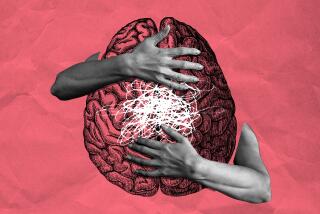Op-Ed: No, mindfulness is not a fad
You can’t open a magazine these days without seeing something about “mindfulness.” The concept has become so ubiquitous, a friend asked me the other day if its popularity was just a fad.
As a social psychologist who has studied mindfulness for nearly four decades, I am certain that it is not. Unlike, say, the hula hoop, mindfulness actually is enlivening, and it can improve our lives greatly in measurable ways.
But I do see a risk in its newfound currency: The idea of mindfulness could become so watered down or misrepresented that we fail to fully appreciate its ability to better our lives — that we become mindless about mindfulness.
Mindfulness is often described as the ability to be in the moment, to be in the present, to be aware. The problem with this is that everyone thinks they are already aware. Some people meditate to become more mindful. Meditation is really just a tool that leads to post-meditative mindfulness. Although it’s a good tool, it’s a tool nonetheless, not the end.
While it may be tempting to dismiss what some have called “mindfulness culture,” we should not dismiss mindfulness itself.
There are other ways to work toward mindfulness. One is to simply notice new things. When we notice new aspects to something we thought we knew well, we come to realize that we didn’t know it as well as we thought we did, and then naturally we give it more attention.
Often we are in this more mindful state when we travel to a new destination. In a foreign environment, we don’t have to try to be mindful. Since we are already expecting to see new things, we are in a state of active noticing.
To be mindful is to be in this state even in familiar contexts and relationships. When we think we know a place or a person, we tend to tune out. When we’re not sure about something, we tune in.
You can experiment with these different states by actively noticing five new things about a close friend or someone you live with. As you begin to take in new information, the person is likely to come alive to you in ways he or she previously was not.
By recognizing that we don’t fully know something, we exploit the power of uncertainty. Alternative interpretations — of situations, of others, of ourselves — become available to us. Things we have perceived as fixed may suddenly appear unfixed. Noticing new things puts us in the present.
Over 40 years of studying mindfulness, I have found wide-ranging benefits to all this. Mindfulness can improve competence, relationships, happiness, even health and longevity.
Much of this work started with a study I conducted in the 1970s with my colleague Judith Rodin. One group of nursing home residents was given a choice of plants and encouraged to decide where to put their plants, as well as when and how much to water them. Another group was given plants and told that the nursing staff would take care of them.
The most startling result was that, a year and a half later, twice as many residents in the first group were alive than in the second. Making choices about things like the care of plants resulted in mindfulness, and that mindfulness had powerful consequences.
A few years later I conducted the “counterclockwise” study, in which eight men in their 70s lived for five days as though they were 20 years younger. Their surroundings were a time warp, designed to conjure 1959. As a result of putting their minds in this earlier place, their vision and hearing improved, as did their strength and memory. They even looked younger at the end of the week.
My lab explored the mind-body connection further through several studies on chambermaids, who lost weight after simply being told that their work was exercise.
Our current research looks at the effects of mindfulness on chronic diseases, such as diabetes and Alzheimer’s. In our diabetes study, we found that patients’ blood sugar levels varied with perceived time rather than real time.
We have found that mindful noticing diminished pain for people with arthritis and chronic pain. And in a pilot study on MS patients, we found that they experienced relief through the simple process of noticing fluctuations in their symptoms.
The positive consequences of mindfulness are not limited to the unhealthy or otherwise stressed. We have found that, through mindfulness, burnout and boredom become things of the past and relationships improve.
What’s more, the products we produce bear the imprint of our mindfulness, and are preferred to mindlessly executed products. For example, we found that when symphony musicians are instructed to make their performance new in very subtle ways that only they would know, they enjoyed playing the music more and audiences preferred their mindful performances to mindless ones.
While it may be tempting to dismiss what some have called “mindfulness culture,” we should not dismiss mindfulness itself. Mindfulness is literally and figuratively enlivening.
When we’re mindful, our neurons fire, people find us more charismatic and the work we create is more compelling. If that weren’t enough, mindfulness is readily available to anyone willing to give up the illusion of knowing.
Ellen Langer is a professor of psychology at Harvard University and the author of several books on mindfulness, most recently “The Art of Noticing.”
Follow the Opinion section on Twitter @latimesopinion or Facebook
More to Read
A cure for the common opinion
Get thought-provoking perspectives with our weekly newsletter.
You may occasionally receive promotional content from the Los Angeles Times.










